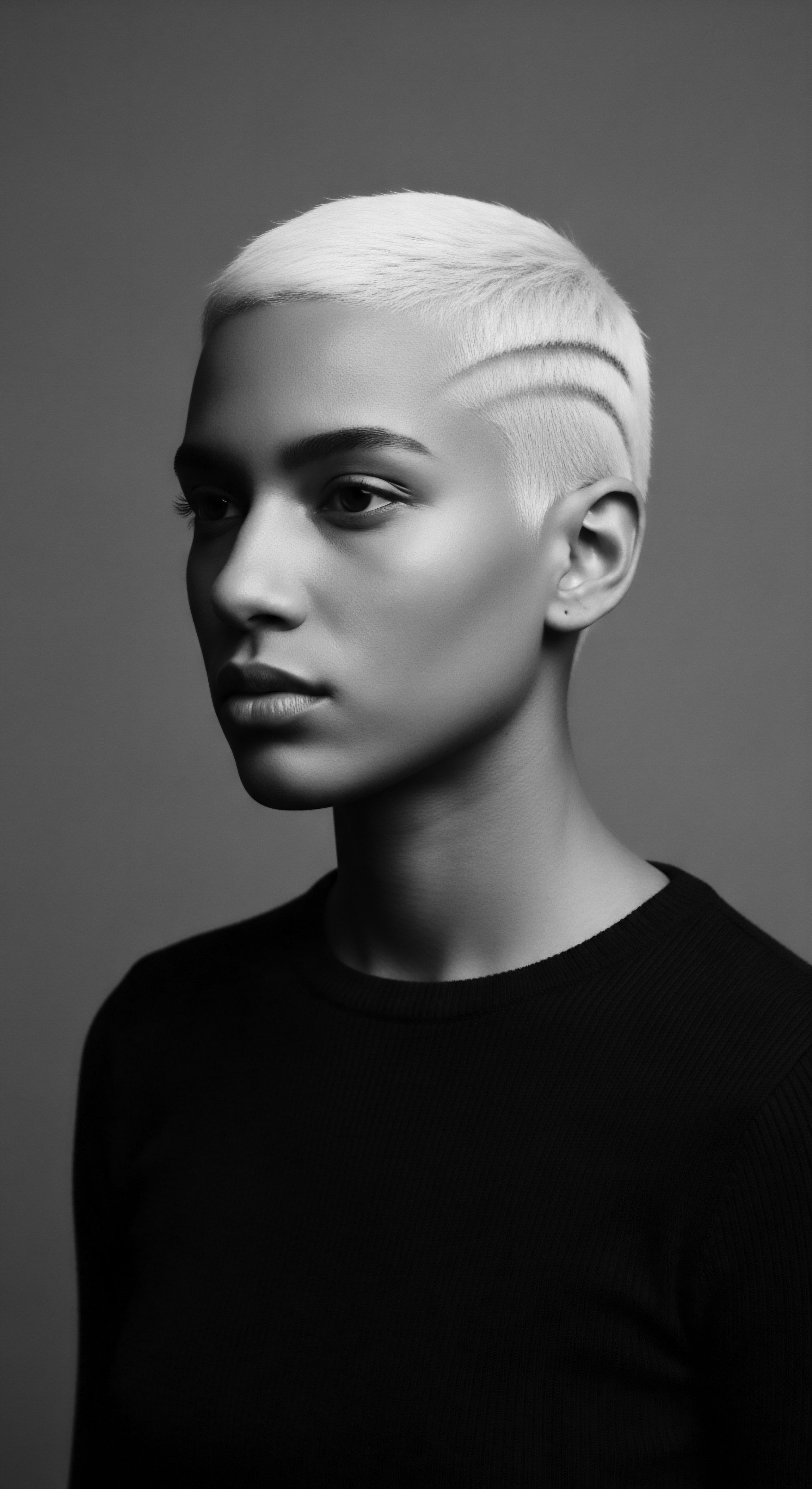
Fundamentals
The concept of Ife Glass Hair emerges from a deep wellspring of ancestral knowledge, merging the radiant aesthetic of well-tended textured strands with the profound artistic and cultural heritage of ancient Ife. At its very core, this designation points to a state of exceptional hair health and luminosity, a visual poetry that speaks to the hair’s vitality and its connection to the rich traditions of care passed down through generations. It is an acknowledgment that true beauty extends beyond superficial appearance, reaching into the very substance of well-being and lineage.
Consider Ife Glass Hair a metaphor, a vibrant description rather than a literal material composition. It evokes the polished, almost luminous surfaces of the renowned bronze and terracotta sculptures from the ancient Yoruba city of Ife, celebrated for their realism, serene expressions, and the subtle sheen that belies their age. Just as these artifacts transmit stories and wisdom through their enduring form, so too does hair, when nurtured with ancestral wisdom, become a living testament to heritage.
The term’s meaning finds root in the idea that hair, particularly textured hair, can achieve a striking reflective quality, a shimmering vibrancy that indicates its resilience, strength, and careful tending. This unique radiance is a visual testament to internal balance and dedicated external care, echoing the meticulous attention given to both self and art within pre-colonial African societies.
This idea finds its grounding in the understanding that hair, beyond its physical attributes, holds significant cultural and spiritual weight across African communities. For countless centuries, hairstyles communicated intricate messages about a person’s identity, social standing, age, marital status, and even their spiritual beliefs. The quest for healthy, gleaming hair was not merely about aesthetics; it was intertwined with a deeper reverence for the self and one’s connection to community and the divine. The light that dances upon well-conditioned coils and kinks, akin to sunlight on polished stone, was and remains a silent affirmation of beauty rooted in tradition.
Ife Glass Hair describes radiant, healthy textured hair, reflecting ancestral care and the luminous artistry of ancient Ife, celebrating a legacy of heritage and vitality.
The foundational understanding of Ife Glass Hair, therefore, begins with the recognition that ancestral practices for hair care often fostered remarkable resilience and shine. These traditions, deeply interwoven with daily life and community rituals, utilized natural ingredients and methods designed to protect the hair fiber, maintain moisture, and promote overall scalp health. The result was hair that possessed a natural sheen, not from synthetic glosses, but from genuine internal and external nourishment. The very environment of pre-colonial West Africa, with its emphasis on communal care and respect for nature, laid the groundwork for hair practices that inherently supported such radiant outcomes.
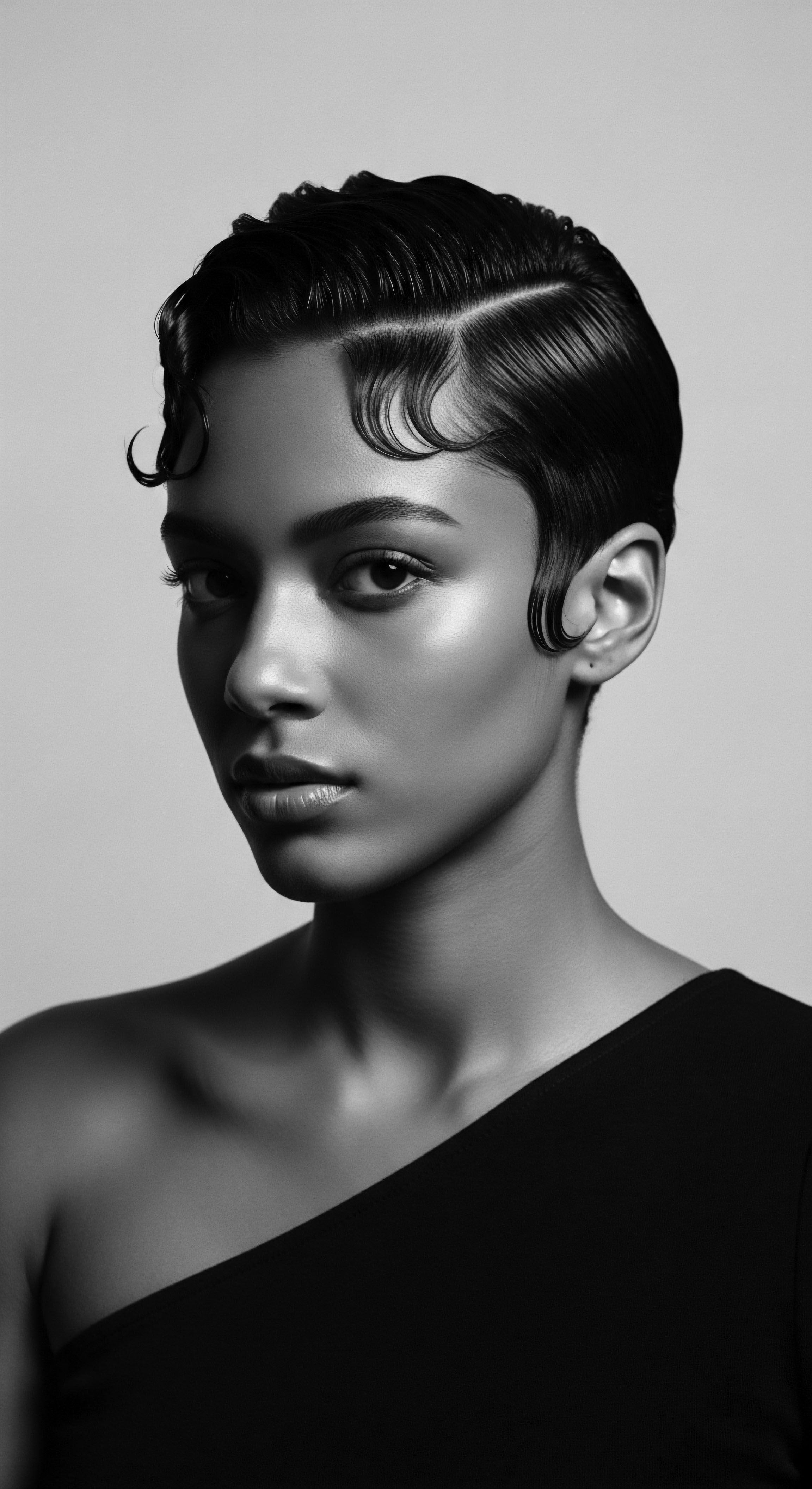
Intermediate
Moving beyond a fundamental grasp, the intermediate understanding of Ife Glass Hair requires a deeper journey into its components ❉ the ‘Ife’ as cultural bedrock and the ‘Glass’ as a physical manifestation of heritage-informed care. The connection to Ife is multifaceted. Ancient Ife, the spiritual heartland of the Yoruba people, produced art of unparalleled sophistication, marked by its lifelike forms and smooth, often burnished surfaces.
These artistic expressions were not merely decorative; they conveyed profound philosophical and spiritual concepts, embodying the Yoruba worldview where beauty and inner character, Ìwà, are inextricably linked. The idea of ‘Glass’ in Ife Glass Hair does not suggest a Eurocentric ideal of straight, sleek hair; instead, it refers to a particular quality of light reflection and cohesion on textured hair, achieved through practices attuned to its unique structural needs.

The Ife Nexus ❉ Art, Spirit, and Hair’s Reverence
In the Yoruba cosmology, the head, or Ori, holds immense significance, representing one’s destiny, individuality, and inner essence. As the highest point of the body, hair atop the head was regarded as a sacred conduit for spiritual energy and communication with the divine. To adorn and care for the hair, then, became an act of honoring one’s Ori and inviting positive fortune.
This deep reverence elevated hair care beyond mere grooming; it was a ritual, a profound interaction with one’s spiritual self and ancestral lineage. This cultural emphasis created an environment where hair health and aesthetic perfection were intertwined with personal well-being and communal identity.
The artistry witnessed in Ife’s sculptures, where heads are often given disproportionate prominence to underscore their spiritual significance, parallels the deliberate, artful shaping of hair in traditional Yoruba society. The smooth, idealized surfaces of these ancient bronzes hint at a desire for a perfected, luminous presentation—a visual parallel to the radiant sheen of Ife Glass Hair. The Onídìrí, or traditional Yoruba hair artists, were highly respected figures within their communities, their skills akin to sculpting, shaping hair into intricate styles that communicated social status, age, marital state, or tribal affiliation.
They were not simply stylists; they were cultural custodians, interpreting and expressing communal values through their masterful work. This rich historical context firmly anchors the ‘Ife’ aspect of Ife Glass Hair in a heritage of profound cultural appreciation for hair.
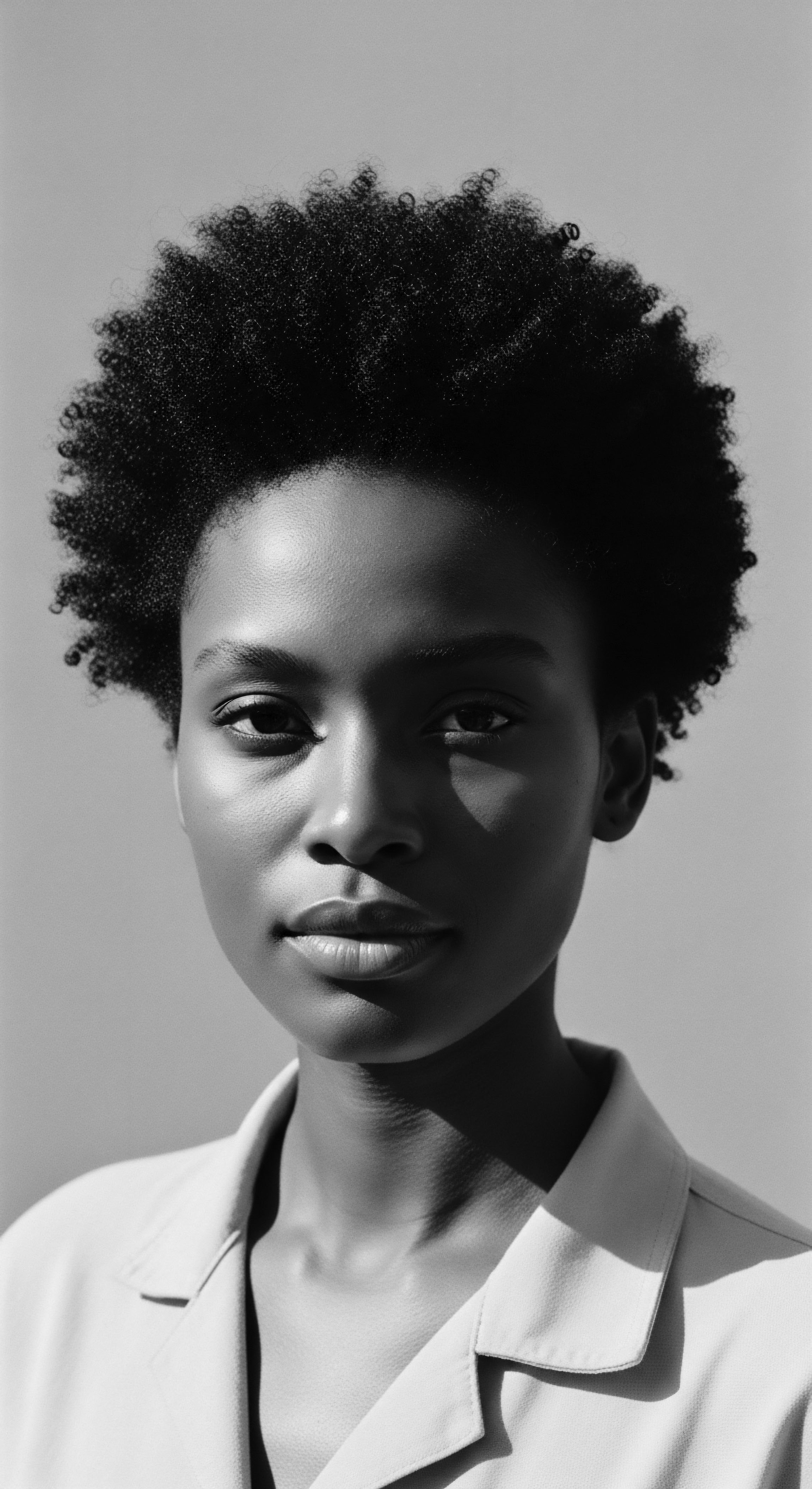
The ‘Glass’ Quality ❉ A Science of Heritage
The ‘Glass’ aspect of Ife Glass Hair speaks to the hair’s intrinsic ability to reflect light, a characteristic tied directly to the health and structural integrity of the hair strand, particularly its outermost layer, the Cuticle. The cuticle consists of overlapping scales, much like shingles on a roof. When these scales lie flat and smooth, they allow light to bounce off uniformly, creating a luminous sheen. For textured hair, with its unique bends and coils, maintaining this smooth cuticle can be more challenging than for straight hair, as the helical structure can naturally lead to raised cuticles and thus, less reflection.
However, ancestral practices, often rooted in keen observation and generational experimentation, found ways to foster this reflective quality. These traditional methods consistently prioritized moisture retention and protection. Think of the communal wash days and oiling rituals that were cornerstones of African hair care. The application of rich, natural oils and butters, often derived from indigenous plants, played a pivotal role in nourishing the hair and sealing the cuticle.
- Shea Butter (Òrí) ❉ A staple in West African hair care, providing deep moisture and acting as a sealant, helping to smooth the cuticle and impart a healthy luster.
- Palm Kernel Oil (Epo èkùrọ́) ❉ Another traditional Yoruba ingredient known for its nourishing properties, contributing to hair’s softness and sheen.
- Coconut Oil (Epo àgbọn) ❉ Used across various African regions, it penetrates the hair shaft, reducing protein loss and helping to smooth the cuticle from within.
These natural emollients, applied with skilled hands, helped to condition the hair, reduce friction between strands, and encourage the cuticle scales to lay flat, thereby maximizing light reflection and creating that desired ‘glass’ effect.
A significant traditional practice that profoundly contributed to the ‘Glass’ quality of Ife Glass Hair, particularly through promoting length retention and minimizing manipulation, is Irun Kiko , or African hair threading. Documented as a prevalent practice among the Yoruba people as early as the 15th century, Irun Kiko involves wrapping sections of hair tightly with cotton or synthetic threads from root to tip. This technique stretches the hair gently without heat, creating elongated, protective styles that reduce tangling, breakage, and exposure to environmental stressors.
The consistent protection afforded by Irun Kiko allows the hair’s natural oils to distribute more evenly, leading to a smoother cuticle and an enhanced, natural sheen over time, truly exemplifying the ‘glass’ aspect through ancestral ingenuity. It is a powerful illustration of how ancient practices, often seen as mere styling, were also sophisticated forms of hair preservation and enhancement, directly contributing to the hair’s radiant appearance.
The communal nature of these practices, where hair care was a shared activity, often spanning hours and fostering deep bonds between family and friends, imbued the process with profound cultural meaning. This collective investment in hair’s well-being further solidified its place as a symbol of identity and a canvas for cultural expression, where the pursuit of radiant hair was a collective endeavor, rooted in mutual care and shared heritage.
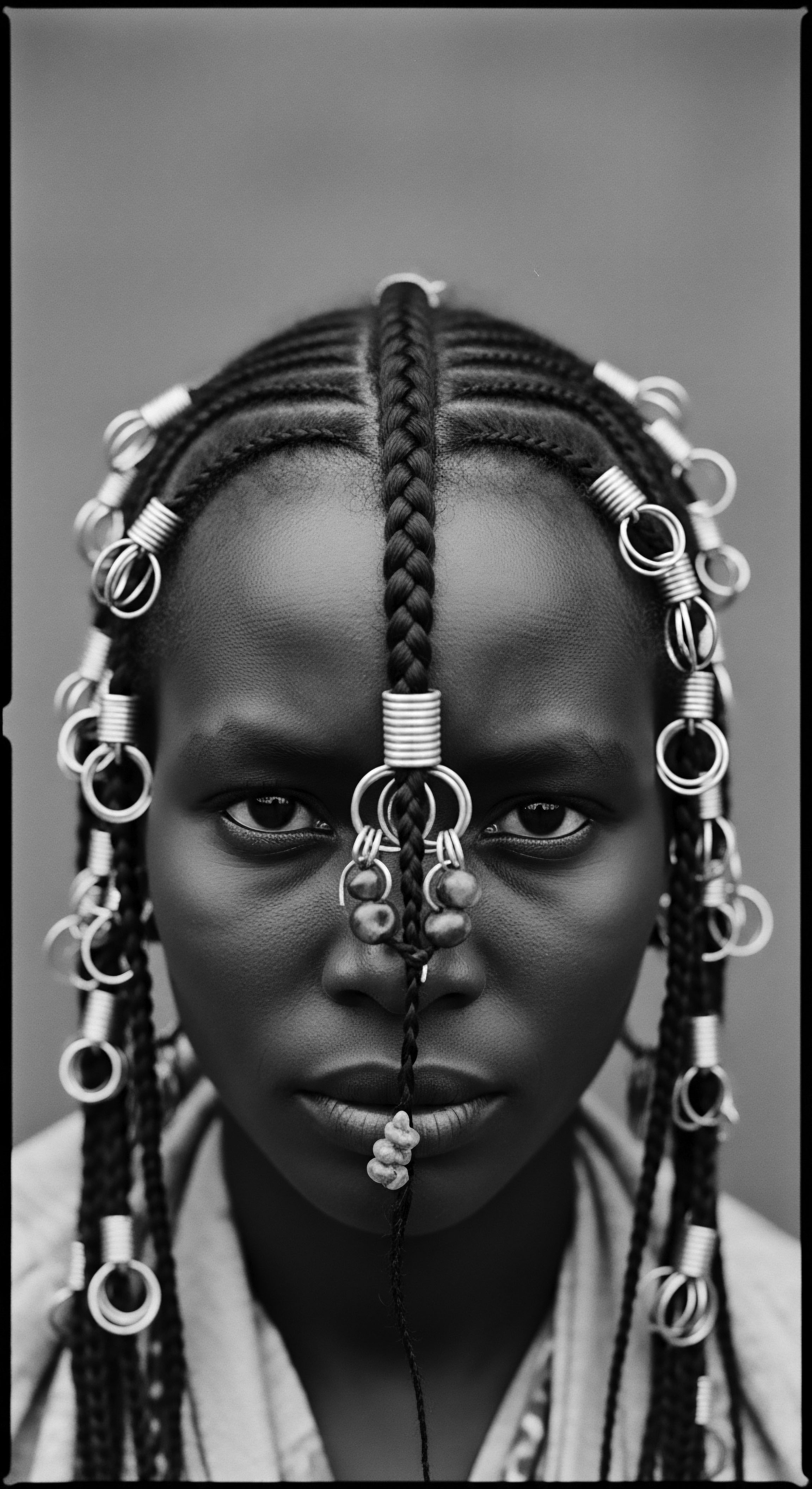
Academic
The academic understanding of Ife Glass Hair transcends its metaphorical charm, positioning it as a profound descriptor for textured hair that achieves an optimal state of structural integrity and aesthetic luminosity through practices deeply rooted in ancestral Black and mixed-race hair heritage. This concept is not merely a modern aspiration for shine, but rather an echo of long-standing traditional values placed on hair health, appearance, and spiritual connection within African cultures, particularly within the rich context of the Yoruba people of Ife. The term’s precise meaning encapsulates the synergy of biological well-being, culturally specific care rituals, and deeply embedded symbolic significance.

Definition ❉ The Luminous Intersection of Biology and Heritage
Ife Glass Hair is an interpretive framework for understanding the state of textured hair exhibiting exceptional smoothness, hydration, and light reflectivity, achieved through consistent, heritage-informed care modalities. This optimal condition arises when the hair’s cuticle layer , the outermost protective sheath composed of overlapping keratinized cells, lies in a consistently flat, coherent configuration, allowing for maximal specular reflection of incident light. The term directly references the acclaimed ancient Ife bronzes and terracottas, celebrated for their remarkably polished surfaces and serene facial depictions, symbolizing a deep Yoruba aesthetic appreciation for refined presentation and inherent luminosity.
It suggests that the radiant quality of these historical artifacts finds a living parallel in meticulously cared-for textured hair, where ancestral practices foster a natural brilliance that stands as a testament to vitality and cultural pride. This is a deliberate articulation of hair’s capacity to serve as a communicative medium, reflecting not just physiological health, but also a profound connection to collective history and identity.
Ife Glass Hair signifies the radiant state of textured hair, achieved through ancestral practices, where its cuticle integrity creates a luminous sheen reminiscent of ancient Ife artistry, embodying vitality and cultural heritage.
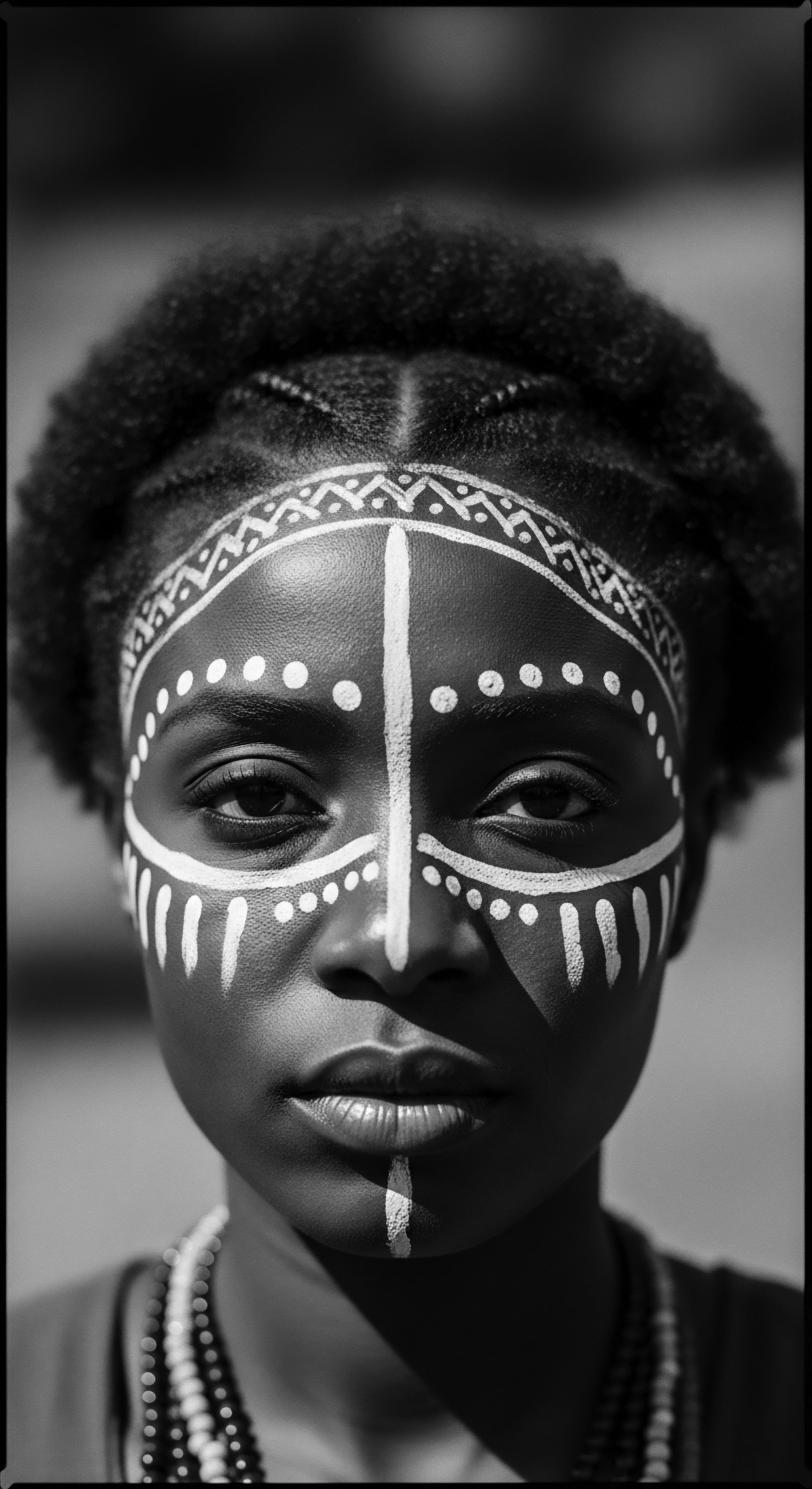
Elemental Biology and Ancestral Insights ❉ Echoes from the Source
The intrinsic structure of textured hair, characterized by its elliptical cross-section and varying degrees of curl or coil, predisposes the cuticle scales to a more raised position compared to straighter hair types. This natural predisposition can result in increased friction between strands and a tendency for moisture loss, potentially diminishing natural shine. Yet, traditional African hair care, particularly observed among the Yoruba, developed sophisticated responses to these inherent biological characteristics over millennia. These responses were born from an intuitive understanding of the hair’s elemental needs, often validated by contemporary trichological science.
For instance, the systematic application of naturally occurring emollients such as shea butter (Òrí) , palm kernel oil (Epo èkùrọ́) , and coconut oil (Epo àgbọn) directly addresses the need for external lipid replenishment and cuticle sealing. These substances, rich in fatty acids and vitamins, would have penetrated the hair shaft, lubricating and softening the cuticle while forming a protective barrier that minimized moisture evaporation and smoothed the cuticle scales, thus enhancing light reflection.
The selection of these natural ingredients was not arbitrary; it stemmed from generations of experiential knowledge and a deep connection to the land. The very act of applying these traditional oils and butters was often a slow, meditative process, performed within the social fabric of family and community. This mindful application, combined with gentle manipulation techniques, would have further contributed to cuticle alignment. The historical evidence points to a hair care regimen that was both holistic and preventative, laying the biological groundwork for the manifestation of Ife Glass Hair.

The Tender Thread ❉ Living Traditions of Care and Community
The communal aspect of hair care in pre-colonial African societies cannot be overstated, serving as a powerful mechanism for knowledge transfer and social cohesion. The Onídìrí , or hair artists, were not merely technicians; they were esteemed cultural practitioners whose hands guided not only hair but also conversation, storytelling, and the preservation of communal memory. The intricate processes involved in styling, which could span many hours or even days, created dedicated spaces for intergenerational bonding and the sharing of wisdom.
A compelling historical example that powerfully illustrates the tender thread of ancestral practices leading to radiant hair is the enduring tradition of Irun Kiko , or hair threading, among the Yoruba people. Originating as early as the 15th century, Irun Kiko is a protective styling technique involving the meticulous wrapping of hair strands with thread. This method served several critical functions:
- Length Retention ❉ The threading technique gently stretches hair without heat, minimizing shrinkage and protecting delicate ends from friction and environmental damage, thereby allowing for greater length retention.
- Moisture Preservation ❉ Encasing the hair within threads helps to seal in moisture and protect the hair from dehydration, a common challenge for textured hair types.
- Cuticle Smoothing ❉ The tension and smooth surface of the thread, when wrapped precisely, can encourage the hair’s cuticle layers to lie flatter, directly contributing to a more uniform surface and enhanced light reflection.
- Reduced Manipulation ❉ As a long-lasting protective style, Irun Kiko minimized daily combing and styling, reducing mechanical stress that can lead to cuticle damage and breakage.
A study exploring hair care practices in West Africa notes that African hair threading, known as Irun Kiko among the Yoruba, has been an effective method of length retention for centuries, with contemporary practitioners recognizing its ability to achieve a “blowout without heat”. This specific historical instance underscores how ancestral practices directly contributed to the health and appearance of hair, fostering the very qualities associated with Ife Glass Hair ❉ resilience, managed length, and a vibrant, healthy surface. The disciplined application of this technique, passed down through generations, created hair that was not only aesthetically pleasing but also robust and well-preserved.
Beyond techniques, tools also carry profound ancestral weight. The African comb , for instance, has a history stretching back over 7,000 years, with archaeological finds from ancient Kush and Kemet revealing elaborately carved combs buried with their owners. These combs were not merely detangling instruments; they were status symbols, decorative adornments, and even objects imbued with spiritual meaning, reflecting respect for nature and the belief that hair was sacred. The careful selection and use of these tools, alongside the nurturing touch of the community, completed a holistic system of hair care.
| Traditional Practice Irun Kiko (Hair Threading) |
| Associated Ingredient/Tool Cotton or synthetic threads |
| Mechanism Contributing to Luster/Health Protects hair from manipulation, seals in moisture, gently stretches strands, and promotes cuticle alignment, enhancing natural light reflection. |
| Traditional Practice Oiling/Greasing Rituals |
| Associated Ingredient/Tool Òrí (Shea Butter), Epo èkùrọ́ (Palm Kernel Oil), Epo àgbọn (Coconut Oil) |
| Mechanism Contributing to Luster/Health Provides emollients and fatty acids that penetrate the hair shaft, lubricate the cuticle, reduce frizz, and create a smooth, reflective surface. |
| Traditional Practice Communal Braiding & Styling |
| Associated Ingredient/Tool Skilled hands of Onídìrí (Hair Artists), traditional combs |
| Mechanism Contributing to Luster/Health Minimizes damage through gentle handling, distributes natural oils, and the collective attention reinforces the hair's social and spiritual value, promoting overall well-being. |
| Traditional Practice These heritage practices, deeply rooted in Yoruba cultural philosophy, collectively supported the structural integrity and aesthetic radiance of textured hair, culminating in what may be envisioned as Ife Glass Hair. |

The Unbound Helix ❉ Voicing Identity and Shaping Futures
The concept of Ife Glass Hair extends its meaning into the realm of identity and future aspirations for Black and mixed-race hair experiences. In societies where textured hair was often denigrated or deemed “unprofessional” under Eurocentric beauty standards, the deliberate cultivation of hair that radiates health and luster becomes an act of self-affirmation and cultural reclamation. The journey toward achieving Ife Glass Hair, therefore, is not merely a cosmetic pursuit; it is a profound engagement with one’s heritage and a powerful statement of self-worth.
The significance of hair in African culture as a marker of identity and resistance has historical precedent. During the transatlantic slave trade, the forcible shaving of African people’s heads was a calculated act to strip them of their cultural identity and morale. Yet, resiliently, communities in the diaspora adapted, using intricate braiding patterns to conceal seeds for survival or to create maps for escape routes.
Hair became a silent language of defiance, and its care a covert ritual of cultural preservation. The emergence of movements like the Black Power movement in the 1960s, with its embrace of the Afro, symbolized a powerful rejection of oppressive beauty norms and a celebration of African heritage and natural hair.
Today, Ife Glass Hair embodies this legacy, offering a contemporary vision for textured hair that honors its complex past while looking confidently toward the future. It calls for an approach to hair care that is mindful, holistic, and culturally informed, drawing from ancestral wisdom and integrating it with modern scientific understanding. This perspective encourages individuals to view their hair not as something to be tamed or altered to fit external ideals, but as an integral part of their being, a living connection to their roots, deserving of reverence and precise nourishment.
The luminosity of Ife Glass Hair, therefore, represents not just light reflecting off the hair’s surface, but the radiant inner light of self-acceptance and cultural pride. It encourages individuals to embark on a hair journey that is deeply personal and historically resonant, celebrating every coil, curl, and kink as a testament to enduring beauty and a rich, vibrant heritage.
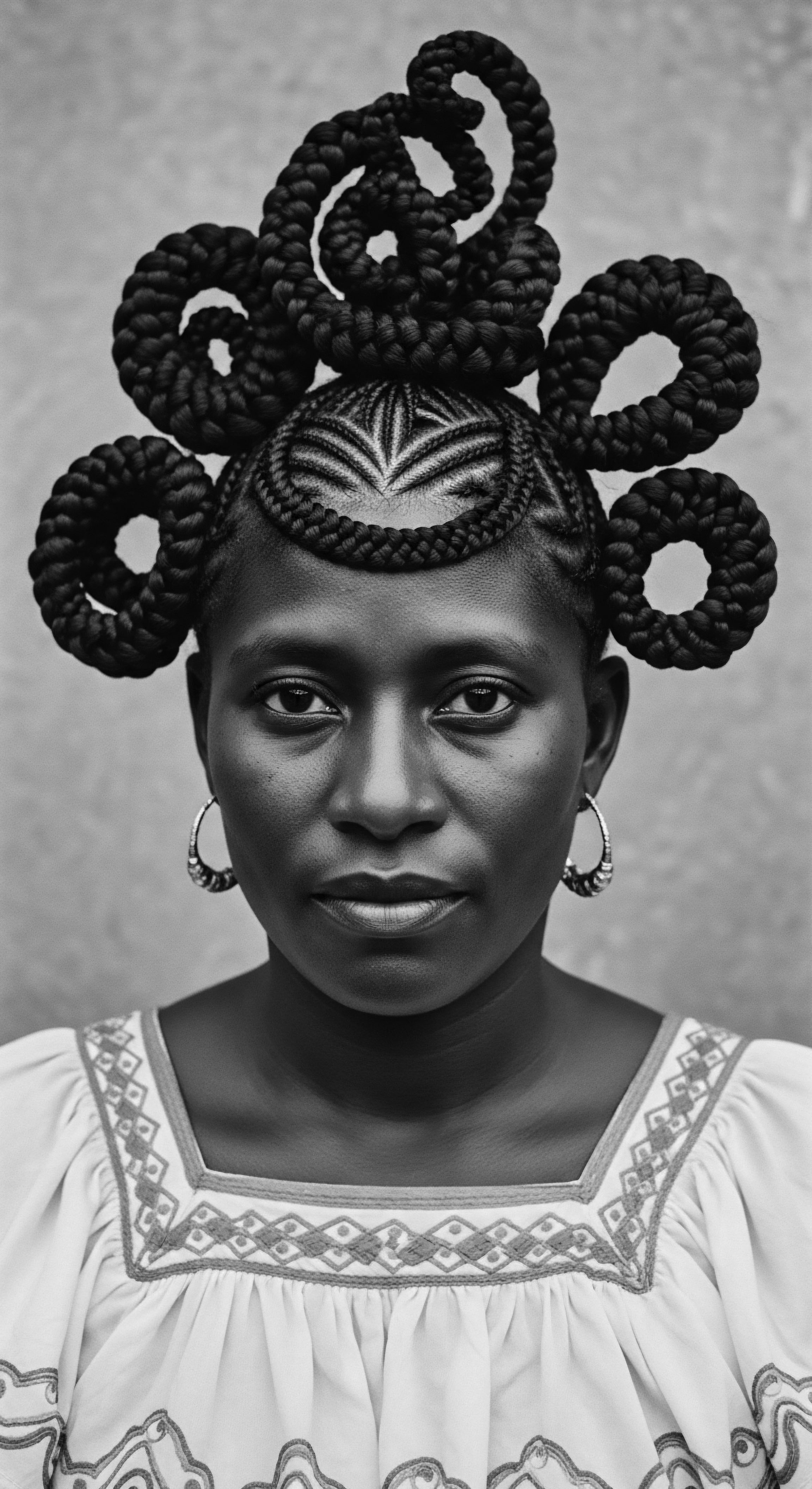
Reflection on the Heritage of Ife Glass Hair
The profound meditation on Ife Glass Hair compels us to look beyond fleeting trends and embrace the enduring wisdom etched into every strand of textured hair. We are reminded that the quest for radiant, healthy hair is a journey that began millennia ago, guided by the discerning hands and deep understanding of our ancestors. The luminosity of Ife Glass Hair is a testament to their ingenuity, their profound connection to natural elements, and their unwavering reverence for hair as a sacred aspect of the self. This concept invites us to walk a path where scientific insight illuminates long-standing traditional practices, affirming that our historical methods were not merely folkloric but profoundly effective, fostering the resilience and beauty of Black and mixed-race hair across generations.
To truly grasp the essence of Ife Glass Hair is to recognize that our hair carries echoes of ancient drumbeats, the whispers of shared laughter during communal styling rituals, and the silent strength of those who preserved their identity through their crowns. It is a call to honor the hands that came before us, to appreciate the knowledge passed down, and to recognize that the pursuit of healthy, radiant hair today is a continuation of a deeply meaningful cultural narrative. May we continue to see our hair as a living, breathing archive, shimmering with the stories of our collective past and radiating the promise of our future, always rooted in the undeniable beauty of our heritage.

References
- Abiodun, Rowland. 2014. Yorùbá Art and Language ❉ Seeking the African in African Art. New York ❉ Cambridge University Press.
- Byrd, Ayana, and Lori L. Tharps. 2001. Hair Story ❉ Untangling the Roots of Black Hair in America. St. Martin’s Press.
- Dabiri, Emma. 2020. Twisted ❉ The Tangled History of Black Hair Culture. Harper Perennial.
- Ellington, Tameka N. 2020. Black Hair in a White World. Kent State University Press.
- Lawal, Babatunde. 2000. “Orilonise ❉ the hermeneutics of the head and hairstyles among the Yoruba.” In Hair in African art and culture, edited by Roy Sieber, 92–109. New York ❉ Museum for African Art; Munich ❉ Prestel.
- Omotoso, Sharon Adetutu. 2018. “Gender and Hair Politics ❉ An African Philosophical Analysis.” Journal of Pan African Studies 12, no. 8 ❉ 8.
- Sieber, Roy, and Frank Herreman, eds. 2000. Hair in African Art and Culture. Museum for African Art.
- Walker, Madam C.J. 1916. Text Book of the Madam C.J. Walker Schools of Beauty Culture.
